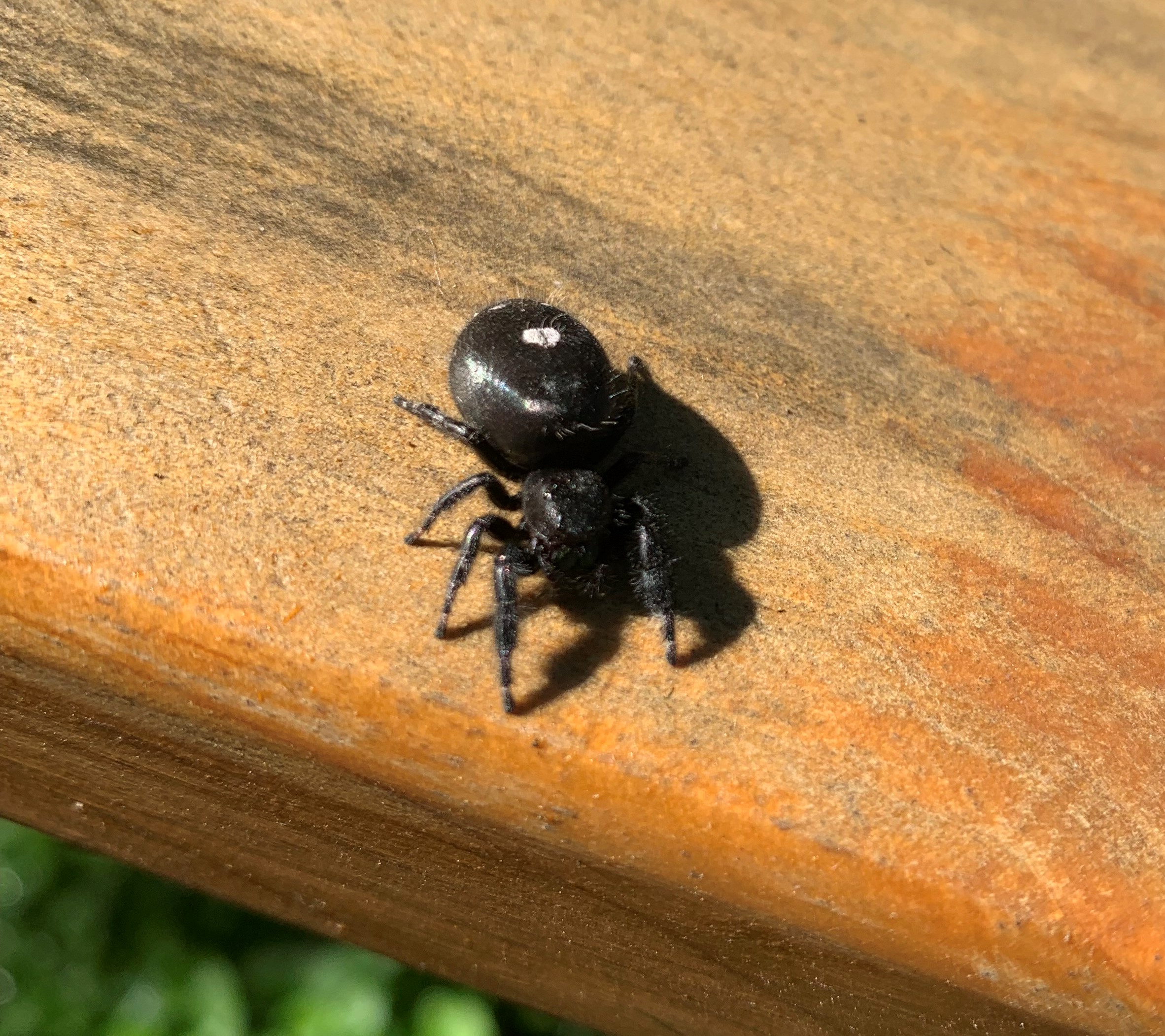There’s an amazing, sophisticated, and unwelcome creature who has made its way into the house. It’s not very big—only about half an inch long. It’s sitting on the kitchen counter. It’s looking around with its astonishing set of optical tools, contemplating its universe. Without warning, a giant dome comes from nowhere and traps the creature. It sits inside the dome, still considering its next move. Then it walks around the dome, creating crisscrossed lines of silk as it moves about. It is trapped beneath the dome, and its efforts to escape are futile. And then the floor of the dome changes—something slides in from the side—a new surface. No escape, but something new. The floor tilts as the dome rises. The little fellow holds on to the paper floor. And then, miraculously, he thinks, if he thinks, the prison separates floor from dome, and he is free. He finds himself outdoors. He jumps away on his hydraulic legs and goes about his business. Bryan puts the glass he used to capture it into the dishwasher and goes about his business.
Little creatures are an important component of the ecosystem at Owl Acres, even though we’re not fond of having them in the house. This little fellow is no exception. It is a bold jumper (Phidippus audax), a member of the jumping spider community. Like other spiders, our bold jumper has two major body parts, an abdomen, and a cephalothorax, which combines the head and the thorax. The front end of the cephalothorax is a flat rectangle (or face) where you find its iridescent green mouth parts and four of its eyes. The mouth parts include a set of fangs which protrude about “chin” level and can open and close sideways for biting. The fangs are hollow to conduct venom from where it’s produced through the tips and into the prey A bit farther back are the pedipalps which have sensitive chemical sensors that work like smell and taste organs. The spider is generally hairy, and the male carries this theme farther with eyebrows over his front-facing eyes. It is black with patches of white, yellow or orange on its legs and abdomen.
Our little bold jumper doesn’t make webs to catch food. Instead, it is a relentless hunter, preying on other spiders and all sorts of insects and caterpillars. It hunts during the day, stalking its prey, and then pouncing on it, using its fangs to inject a venom that quickly paralyzes the prey. Then it holds the prey down and bathes it in digestive juices that liquify the tissue so it can suck it up through its tube-like mouth.
Although it doesn’t weave webs to catch prey, a bold jumper does produce silk. Each time it jumps, it puts down a strand of silk as an anchor so it has control of the jump and the prey. It also spins little spider pup tents in secluded places where it rests or lays its eggs.
To accomplish its precision hunting, the bold jumper has two body systems that give it an extra advantage. It can see in a 360-degree circle, and it can jump many times its body length.
Like all spiders, the bold jumper has eight legs. Its legs are shorter than many other spider species, and yet it can use them to jump amazing distances. Instead of big muscles like a grasshopper has, the spider uses an internal hydraulic system. By changing the pressure in the system, the spider can use it to extend its legs for a jump. So, when it pounces, it contracts certain muscles that instantly increase the pressure of the body fluid in its legs, shooting them outward and propelling the spider on its jump.
And it has eight eyes. The two biggest are located in the middle of the front end of the cephalothorax where its face would be if it had a face. These eyes give it stereoscopic vision with which it can very accurately judge distances. It can’t move the whole eye, but it can move the retinas, moving the focus to keep its prey in sight. On the outside of these main eyes are two smaller eyes that broaden its forward field of vision. Almost on top of its head are two more pairs of eyes, two more centrally located and two on the sides. The two on the sides detect motion from the side and behind, giving the spider its 360-degree field of vision. The two smaller eyes closer to the center are thought to detect light.
Because these little fellows will eat anything they can catch, they have been found useful in controlling some crop pests such as weevils, leaf hoppers, beetles, stink bugs and midges. They also dine on mosquitoes.
Bold jumpers are shy but will bite if provoked. However, their bite is not dangerous to humans, although it will raise a welt for a day or so. So, instead of killing them on sight, we will try to capture them and remove them outside if they wander into the house. Out there, they can continue to police the insect population.
Photo by Author
